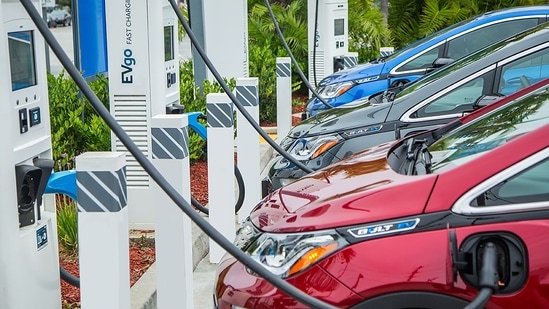An implementation roadmap for EV charging infrastructure
The piece has been authored by Randheer Singh is Senior Specialist-Electric Mobility, NITI Aayog; Chaitanya Kanuri is manager, Electric Mobility at the World Resources Institute India.

The transition to electric mobility is a promising global strategy for decarbonising the transport sector. India is among a handful of countries that support the global EV30@30 campaign, which targets to have at least 30% new vehicle sales be electric by 2030. Reflecting India's commitment to addressing climate change, three major states announced electric vehicle policies in just the last two months. Gujarat announced a budget of ₹870 crores over the next four years to provide subsidies to electric vehicles. Maharashtra set an ambitious target of ensuring that EVs contribute to at least 10% of all new vehicle registrations by 2025. Overall, at least 16 states either have a draft policy on EVs or have notified one.
An accessible and robust network of electric vehicle (EV) charging infrastructure is an essential pre-requisite to achieving this ambitious transition. The Government of India has instituted various enabling policies to promote the development of the charging infrastructure network. However, given the novel characteristics of this new infrastructure type, there is a need to customize it to the unique Indian transport ecosystem and build capacity among stakeholders to support its on-ground expansion. Specifications and standards for EV charging infrastructure vary from one country to another, based on available EV models in the market and the characteristics of the electricity grid. A contextual approach is needed to ensure the efficient and timely implementation of EV charging infrastructure, such that it meets local requirements and is optimally integrated within the electricity supply and transportation networks.
The first step in creating an implementation roadmap is to understand the requirements of EV charging infrastructure in India, and ensure that appropriate standards are in place. As transport electrification in the country is expected to be driven by light electric vehicles (LEVs), comprising of two-wheelers (scooters, motorcycles) and three-wheelers (passenger and cargo), its charging requirements vary significantly from those of other countries with more homogenous, car-based transportation. Serving these needs requires a distributed approach to public charging infrastructure, which aims to achieve a dense network of normal power charging points integrated with parking infrastructure. EV charging can be accommodated even at a single parking spot, or at many parking spots in a large parking lot. Therefore, the space required at each location may be small, but multiple locations are needed for an effective network. This allows for a rapidly scalable EV charging network which leverages the ubiquitous low-tension (LT) electricity distribution infrastructure to provide connections for EV charging.
In this context, the Indian standards being developed by the department of science and technology (DST) and the Bureau of Indian Standards (BIS) for affordable, normal power charging points for light EVs and e-cars are expected to strengthen the distributed charging infrastructure approach and contribute to faster scaling of charging networks.
Another critical aspect to effective implementation of EV charging infrastructure is integrated planning. Assessing the EV charging demand, which is based on the projected number of EVs on the road, and estimating the required number of public charging points enables evidence-based target setting for planning agencies. At the same time, easy access to the installed charging infrastructure must be ensured. Location planning for public charging infrastructure helps identify the spatial distribution of charge points needed, based on considerations of access and localized demand. Spatial planning can be undertaken at different scales, from a city-level exercise to one at a neighborhood level. SNAs or ULBs can conduct or commission location planning studies as part of their mandate to ensure a well-planned public charging network. CPOs that are setting up charge point networks may also carry out location planning to identify optimal locations with high charging demand.
Apart from location planning, the supply of electricity for charging infrastructure needs to be planned. DISCOMs play an important role in establishing standard operating procedures streamlining the process of providing electricity connections for charging infrastructure. Additional regulatory measures like EV tariffs, time-of-day tariff measures, and mandating smart charging measures for energy management can ease access to charging infrastructure and minimize the impact of EV charging loads on the electricity grid.
While the electricity demand for EVs, projected to be less than 2% of the total electricity demand across India by 2030, is not expected to be a challenge to meet, the high charging capacities of EVs and their spatial concentration may lead to significant volatility in their local power demand. Combined with bottlenecks in distribution capacity at the local level, this can result in barriers to the seamless provision of EV charging connections and can impact grid stability for all electricity consumers. Going forward, DISCOM planning processes for grid upgrades and network expansions will need to account for EV charging loads.
The EV charging infrastructure market in India is young, with fewer than 2,000 charging stations. However, with the market expected to scale up rapidly in the next few years, companies from various sectors are entering at different points in the value chain. Multiple stakeholders are exploring business models and implementation partnerships to set up EV charging. Creating simplified permission and approval processes for implementation and ensuring the integration of EV charging in spatial and electrical infrastructure planning can support the rapid scaling of charging networks for electric mobility.



